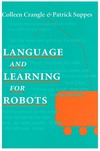

|
|
|
|

Language and Learning for RobotsRobot technology will find wide-scale use only when a robotic device can be given commands and taught new tasks in a natural language. How could a robot understand instructions expressed in English? How could a robot learn from instructions? Crangle and Suppes begin to answer these questions through a theoretical approach to language and learning for robots ad by experimental work with robots. The authors develop the notion of an instructable robot- one which derives its intelligence in part from interaction with humans. Since verbal interaction with a robot requires a natural language semantics, the authors propose a natural-model semantics which they then apply to the interpretation of robot commands. Two experimental projects are described which provide natural-language interfaces to robotic aids for the physically disabled. The authors discuss the specific challenges posed by the interpretations of "stop" commands and the interpretation of spatial prepositions. The authors also examine the use of explicit verbal instruction to teach a robot new procedures; propose ways a robot can learn from corrective commands containing qualitative expressions, and discuss the machine-learning of a natural language use to instruct a robot in the performance of simple physical tasks. Two chapters focus on probabilistic techniques in learning. is a researcher at CSLI. (1922–2014) was Lucie Stern Professor Emeritus of Philosophy at Stanford. Contents
Part I TheoryPart II Language PerformancePart III Learning2/1/94 ISBN (Paperback): 1881526194 (9781881526193)
Subject: Linguistics; Robots--Control Systems |
Distributed by the
University of Chicago Press |
|
pubs @ csli.stanford.edu
|
CSLI Publications
Stanford University Cordura Hall 210 Panama Street Stanford, CA 94305-4101 (650) 723-1839 |